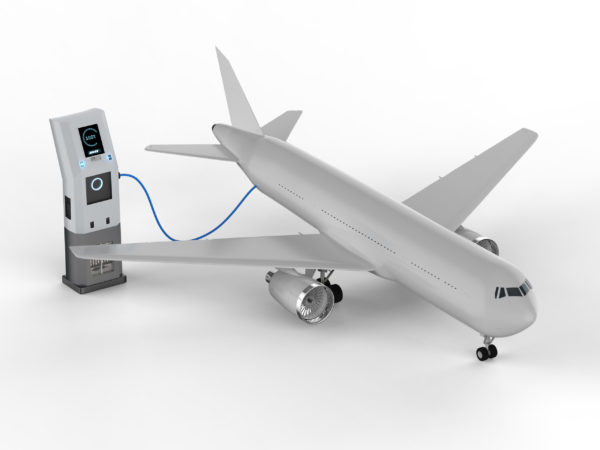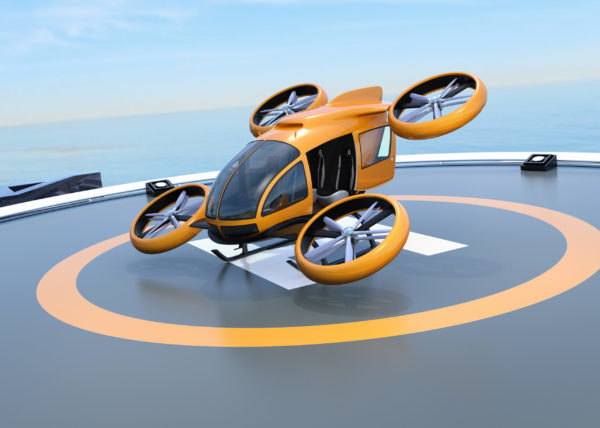Today, air travel accounts for about 2.5% of global carbon emissions, and that number is set to triple by 2050.
Some airlines have started offsetting their carbon emissions, but more needs to be done.
Cue electric airplanes.
We’ve already seen how electric engines have been integrated into the auto industry, so it makes sense to ask the question: Can the same be done for air travel?
Many companies think so and are investing massive amounts of money and expertise toward making it happen. And for good reason!
Not only would electric propulsion motors eliminate direct carbon emissions from planes, but they could also reduce as much as 90% of their fuel costs, 50% of their maintenance costs, and 70% of the noise produced by combustion engines. That’s a lot of pollution and money saved.
The main players: Which companies are leading the charge?

More than a few big names are working on making commercial electric flight possible, including Airbus, Ampaire, magniX, and Eviation.
All of these companies have gone as far as flight-testing their aircraft for commuter, private, and corporate trips, and are presently seeking certification from the U.S. Federal Aviation Authority (FAA).
And buyers are lining up. Cape Air, one of the largest regional airlines, expects to be among the first electric airplane customers. They plan to buy the Alice nine-passenger electric aircraft from Eviation.
Though airlines are testing electric planes to help the planet, there are also huge potential savings on operations costs that make electric flights a good idea business-wise.
Generally, electric motors have longer lifespans than their hydrocarbon-fueled counterparts, usually able to last 20,000 hours vs. 2,000 respectively, before maintenance.
Private flights and electric races

Airlines aren’t the only ones getting in on the fun. Pilots are also lining up for a slice of the action.
Airbus, for example, launched an electric plane race – the very first of its kind – in 2021. Air Race E, as the event is called, is the world’s first all-electric airplane race, and is set to revolutionize the sport as well as spur on much-needed innovations in electric plane manufacturing.
By bringing aviation enthusiasts on board, Airbus hopes to create a mainstream platform to foster the innovation necessary to accelerate progress toward sustainable commercial electric flight.
Speaking of commercial electric flight, it’s closer than you think.
For $140,000 pilots can fly their own electric planes. Pipistrel, a Slovenian aviation company, is selling the Alpha Electro which is the first electric aircraft certified as airworthy by the Federal Aviation Administration.
This electric airplane is lightweight, weighing just 811 pounds, and is powered by a 21-kWh battery pack – which is just 20% of what powers the Tesla Model S. Nonetheless, it produces enough power to keep you and a companion afloat for up to 90 minutes.
NASA is getting involved, too
Forward-moving electric airplanes are not the only electricity-powered air transport vehicles you can look forward to. NASA plans on taking the cause to space with their X-57 Maxwell electric plane which is still under development but which has a design that will replace regular wings with shorter ones that sport a set of distributed electric propellers.
Electric aircraft have electric propellers that provide the necessary lift at takeoff, making it possible to use smaller wings which is ultimately more efficient.
Will you board electric planes for long-distance flights in your lifetime?

Airlines and organizations engaged in the race to commercialize electric airplanes certainly hope so! For the time being, though, electric airplanes will remain limited in how far they can travel.
The best batteries available today produce less power by weight than traditional fuels. They produce an energy density of 250 watt-hours per kilogram, far less than the 12,000 watt-hours per kilogram produced by jet fuel.
Therefore, the batteries required for a long-term flight will be far heavier and take up much more space than jet fuel.
This doesn’t mean you’re unlikely to ever board an electric plane, however.
Approximately half of all flights worldwide are less than 800 kilometers (500 miles) which are expected to be within the range of battery-powered electric aircraft by 2025.
Are you looking forward to electric airplanes?
What surprises you most about electric airplanes? Do you want to fly on one? Share your thoughts in the comments below and don’t forget to share this article with someone who would be interested!
I have seen urban aerial traffic predicted for longer than I have lived. The thought of intercity electric flight is, as always, 20 (twenty) plus years away.
Interesting stuff-Harbour Air, operating out of Vancouver, B.C. has air tested a beaver aircraft all electric and working on establishing scheduled ops of less than 1 hour in near future (Reportidly). Future looks bright and “Yes” I would support all electric flights and be one of the first to board. Then again I’m a aging 89 year old pilot so not much to lose.!